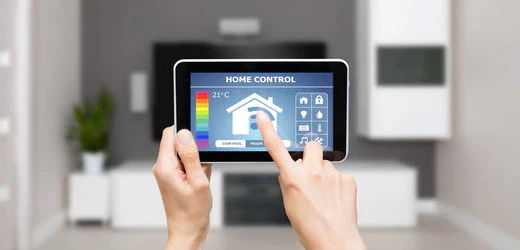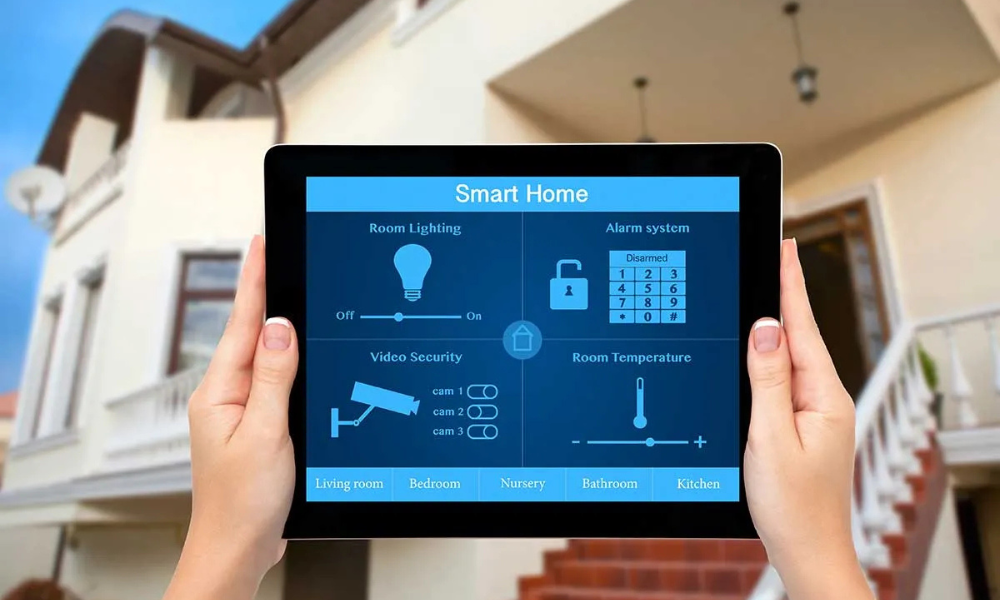Estimated reading time: 5 minutes
Last updated on August 21st, 2025 at 10:31 am
Lighting control systems are essential in modern buildings as they provide better control, convenience, and energy savings. These systems allow for centralized control of lighting fixtures, enabling users to turn lights on and off, dim them, and adjust their brightness according to their needs.
Furthermore, they allow building owners to control and manage the use of electricity, thus, reducing energy consumption and costs. One important aspect of lighting control systems is the use of plenum-rated cables. In this essay, we will explore the benefits of lighting control systems and the importance of plenum-rated cables in achieving these benefits.
Benefits of Lighting Control Systems

Energy Savings
One of the main advantages of lighting control systems is energy savings. These systems allow building owners to manage lighting usage efficiently, reducing energy consumption and, ultimately, costs. They can also automatically turn lights off in unoccupied rooms or areas, thus, reducing energy waste.
Additionally, lighting control systems enable the use of sensors that detect daylight and adjust the lighting accordingly. For example, in areas with sufficient natural light, the lighting system can reduce the brightness, resulting in significant energy savings.
Improved Comfort and Productivity
Another benefit of lighting control systems is improved comfort and productivity. These systems enable users to adjust the lighting according to their preferences, which can help reduce eyestrain, headaches, and fatigue.
In addition, they can improve productivity by providing adequate lighting in work areas, enabling workers to see better and work more efficiently. Also, they allow for the customization of lighting settings to suit different tasks, such as reading, writing, or presenting.
Enhance Security and Safety

Lighting control systems can also enhance security and safety. They can be programmed to turn on lights automatically when motion is detected, deterring potential intruders. Additionally, they can be used to illuminate walkways and emergency exits, enabling occupants to exit the building safely in case of an emergency. In this way, lighting control systems can help prevent accidents and improve the overall safety of a building.
Flexibility and Customization
Another advantage of lighting control systems is their flexibility and customization. They can be programmed to respond to various factors such as occupancy, daylight, and time of day. This means that they can be tailored to the specific needs of the building, and that different areas can have different lighting settings.
For example, a conference room may require different lighting settings than a lobby or hallway. Furthermore, lighting control systems can be easily reprogrammed to suit changing needs and preferences, providing maximum flexibility.
Easy Maintenance
Finally, lighting control systems are relatively easy to maintain. Since they are centralized, faults can be identified and repaired quickly, reducing downtime and disruptions. Additionally, they can be monitored remotely, enabling building owners to identify and address issues before they become problems.
Furthermore, lighting control systems can provide valuable data on energy consumption and usage patterns, which can help building owners optimize their energy usage and identify potential areas for improvement.
Plenum-rated Cables

Plenum-rated cables are an essential component of lighting control systems. These cables are designed to be installed in plenum spaces, which are the spaces above suspended ceilings and below raised floors in buildings.
These spaces are used for air circulation and are part of the building’s ventilation system. Plenum-rated cables are required in these spaces to ensure that they do not emit harmful gases or smoke in case of a fire.
Importance of Plenum-rated Cables
The importance of plenum-rated cables in lighting control systems cannot be overstated. These cables are essential for ensuring the safety of building occupants in the event of a fire. Since plenum spaces are used for air circulation, any cables installed in these spaces are exposed to air movement.
This means that if a fire were to occur, any cables that are not plenum-rated would emit harmful gases and smoke, which could potentially spread throughout the building and cause harm to occupants. Plenum-rated cables prevent this from happening, ensuring that the fire does not spread through the building via the ventilation system.
Integration of Lighting Control Systems and Plenum-rated Cables
The integration of lighting control systems and plenum-rated cables is critical for ensuring the safety and efficiency of a building’s lighting system. Plenum-rated cables allow for safe installation of lighting control systems in plenum spaces, and lighting control systems allow for the centralized control and efficient management of lighting fixtures.
Together, they provide numerous benefits, including energy savings, improved comfort and productivity, enhanced security and safety, flexibility and customization, and easy maintenance.
The Bottom Line
In conclusion, lighting control systems and plenum-rated cables are essential components of modern buildings. Lighting control systems provide numerous benefits, including energy savings, improved comfort and productivity, enhanced security and safety, flexibility and customization, and easy maintenance.
Plenum-rated cables ensure the safety of building occupants by preventing the spread of harmful gases and smoke in case of a fire. The integration of these two components is critical for ensuring the safety and efficiency of a building’s lighting system.
As building owners strive to create safer, more efficient, and more comfortable buildings, lighting control systems and plenum-rated cables will continue to play a crucial role in achieving these goals.



